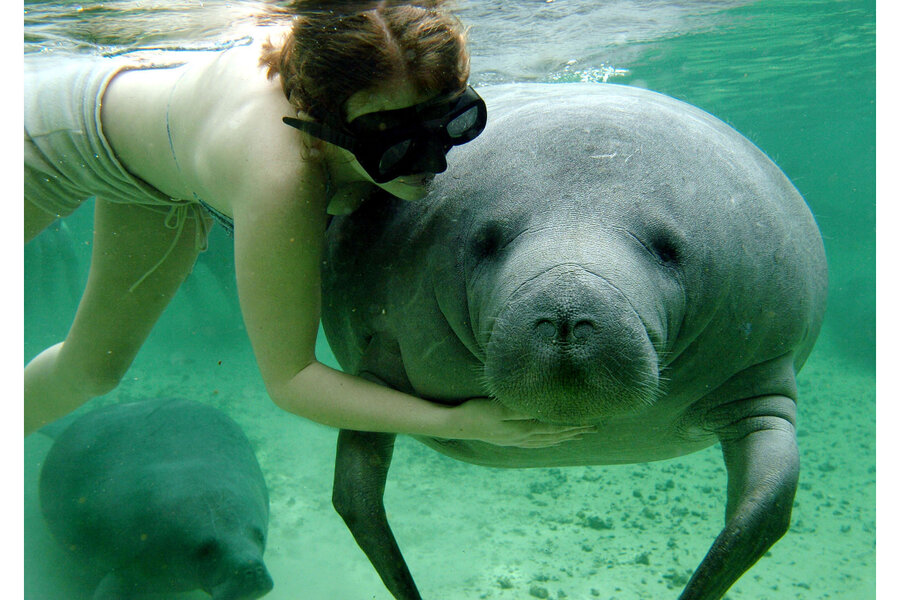Why Florida's manatee population is rebounding
Loading...
The long push to "save the manatees" is working, and the federal government has now officially recognized it as a conservation success.
The Florida manatee population was down to 1,267 in 1991 and now hovers around 6,300, a 500 percent increase, according to the US Fish and Wildlife Service. Recognizing this, the government agency proposed a downgrade for their status and opened a public comment period on Jan. 7.
"While there is still more work to be done to fully recover manatee populations, their numbers are climbing and the threats to the species’ survival are being reduced," Michael Bean at the Department of the Interior said in a news release.
Retrofitted water control structures and artificial warm water sources have helped the manatees, according to the Fish and Wildlife Service, along with the speed limits imposed on boats in areas populated with manatees. Within Florida counties, local governments have been changing boat facilities, so they will be less likely to injure manatees.
Direct rescue efforts have also been successful, as the Marine Mammal Pathobiology Lab works to find and treat injured manatees. In 2015, biologists rescued 89 manatees, of which 54 were released and 12 eventually died, according to a preliminary report by the Florida Fish and Wildlife Conservation Commission.
Some changes may come with a downgrade in the manatees' status, however. The Brevard County commissioners approved a resolution to ask the Florida Legislature for a review of the slow-speed zones for boats, Dave Berman reported for Florida Today. This includes gathering scientific data to see how well the slow-speed areas work or if, in light of the manatee's rebound, they were no longer necessary.
"We're asking for a study to be done so that we can determine if the manatee zones actually work or if they don't work," said the County Commission Vice Chair Curt Smith, who proposed the resolution and is himself a boating enthusiast, according to Florida Today. "Even the 'big, bad boaters' like manatees."
The discussion has some manatee advocates worried, as some say the Fish and Wildlife Service is labeling the manatee rebound as progress too soon.
"The Endangered Species Act has enemies, and if the agencies don't show movement, they come under fire," Dr. Katie Tripp, the director of science and conservation for the Save the Manatee Club, wrote in a Sun Sentinel opinion piece. "Save the Manatee Club has been working for almost 35 years toward a day when manatees can be downlisted and ultimately delisted from the Endangered Species Act, but the manatees' future is far from certain which means the work is far from over."
The manatee's progress is significant, but the creature still faces the same threats that led to its initial protection under the Endangered Species Act, said Jaclyn Lopez, Florida director at the Center for Biological Diversity.
“The Florida manatee has come a long way but is still threatened by boat strikes, cold stress and undiagnosed mass die-offs in the Indian River Lagoon," Ms. Lopez said in a press release.
Even with the downgrade under the Endangered Species Act, manatees would still receive protection from the Marine Mammal Protection Act of 1972 and the Florida Manatee Sanctuary Act of 1978. For example, the 50 manatee protection areas set up by federal, local, and industry leaders remain in place.








